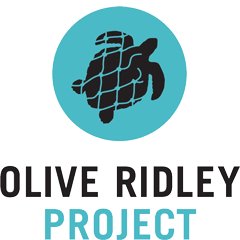We opened the Marine Turtle Rescue Centre in February 2017 in partnership with Coco Collection, at Coco Palm Dhuni Kolhu in Baa Atoll. It was the first fully equipped, veterinary surgeon-led rescue centre for sea turtles in the Maldives. Today, it remains a unique facility globally, treating mostly olive ridley turtles.
Sea turtle emergency – Maldives only
If you have found an injured, sick or entangled sea turtle in the Maldives, please contact our 24-hours sea turtle emergency hotline: Call/WhatsApp/Viber: Maldives 955 2205
The veterinary team
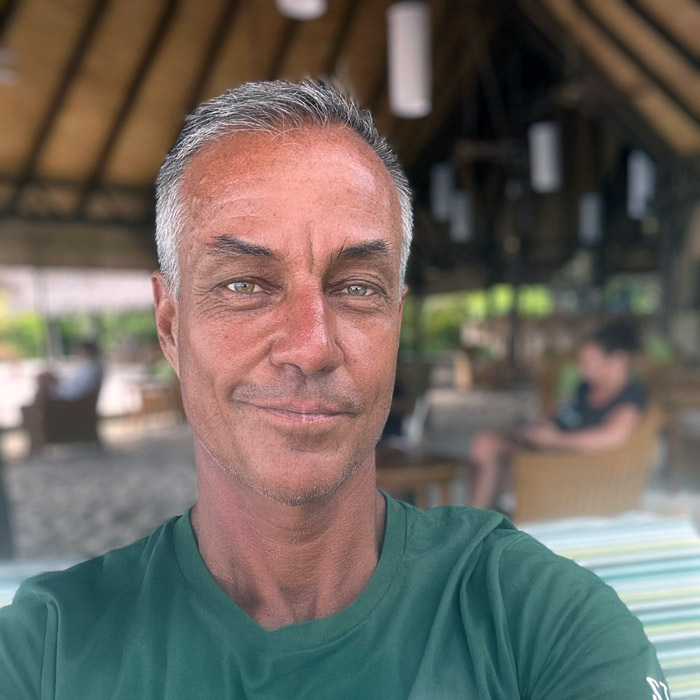


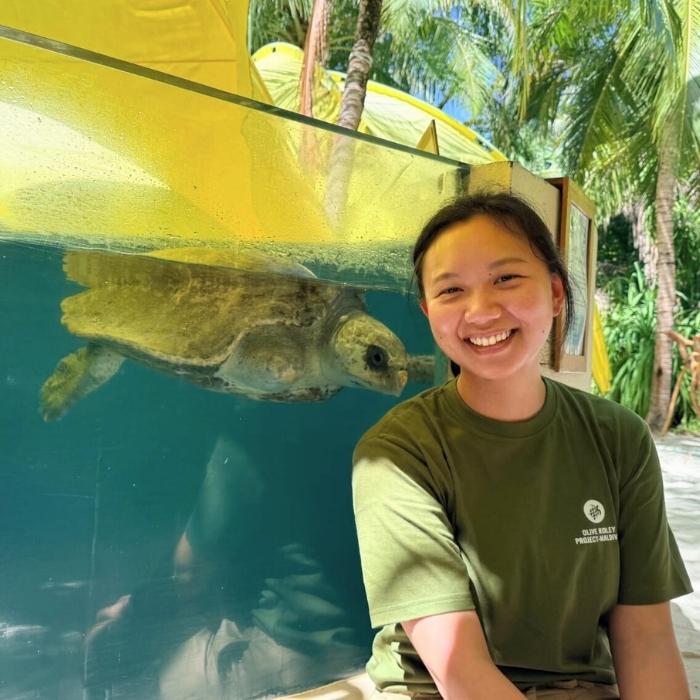
Our clinical facilities are led by our Director of Conservation Medicine, Dr Max Polyak – one of the most experienced sea turtle clinicians in the world. Day-to-day operations at the Rescue Centre are managed by aour dedicated veterinary team that includes a veterinary surgeon, an associate veterinary surgeon, an intern, and one to three volunteers. Between April and October, we also welcome veterinary surgeons participating in our Veterinary Training Programme.
The clinic
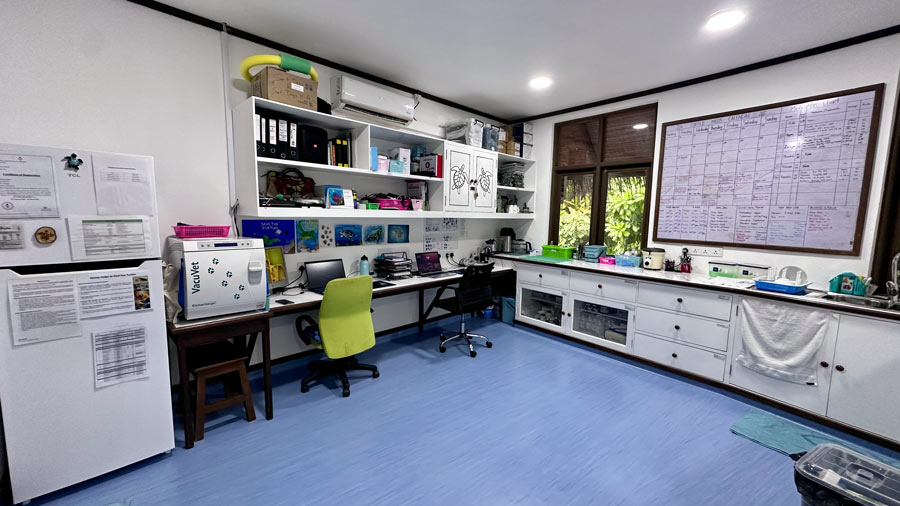
The clinic at the Marine Turtle Rescue Centre is the most advanced sea turtle medical facility in the Maldives. It is comprehensively equipped with a full blood laboratory, radiography, endoscopy, ultrasonography, Class 4 laser, and full surgical suite.
The clinical laboratory allows us to perform comprehensive blood and tissue analysis using the only diagnostic platform validated to assess sea turtle blood in a clinical setting – the Idexx Catalyst One.
We are able to triage and treat any injury or condition faced by sea turtles in Maldivian waters. In addition we serve both as a teaching and expert resource for other rescue centres in the country and region.
Approximately 60% of our patients have been successfully treated and released back into the ocean. This is an outcome that is excellent by wildlife medicine standards and that we continue to improve upon.
X-Rays (Digital Radiography)
Digital radiography (X-ray imaging) allows us to identify internal injuries and underlying health conditions. It is especially useful for diagnosing Buoyancy Syndrome, bone fractures, and lung disease or trauma. Every patient receives an initial set of X-rays upon admission and undergoes follow-up imaging throughout the course of their therapy.
Ultrasound
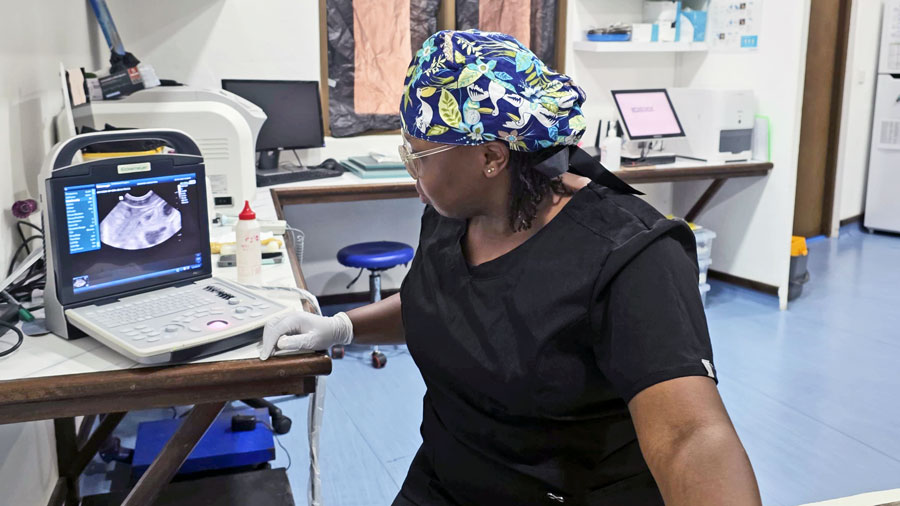
Ultrasonography is a very important diagnostic and therapeutic tool in sea turtle medicine. Unlike with X-rays, ultrasound images soft tissues, blood vessels, organ structures, and sites of disease and injury using sound waves. Our veterinary surgeons also use ultrasound to determine the sex of immature sea turtles and to guide the placement of surgical instruments that require extreme precision.
Endoscopy
Endoscopy is an important tool used by our team in treatment, surgery, and diagnosis of many medical conditions. We routinely use our endoscope to perform bronchoscopies (internal visualization of the lungs), colonoscopies (internal visualisation of the intestinal tract), and gastroscopies (internal visualization of the stomach) in order to evaluate and treat many medical conditions.
The endoscope is also used by our veterinary surgeons to perform endoscopic surgeries, like autologous blood pleurodesis (blood patches to repair torn lungs) and exploratory coeliotomies (exploration of the body cavity to determine the source of a medical issue).
Surgery

We perform surgery in our dedicated surgical room, where we have operating lights, autoclave, surgery table, and extensive surgical equipment.
We are continually improving our facilities through fundraising for new equipment in order to meet our aim of gold standard veterinary care of sea turtles.
Laser therapy (Class IV Photobiomodulation)
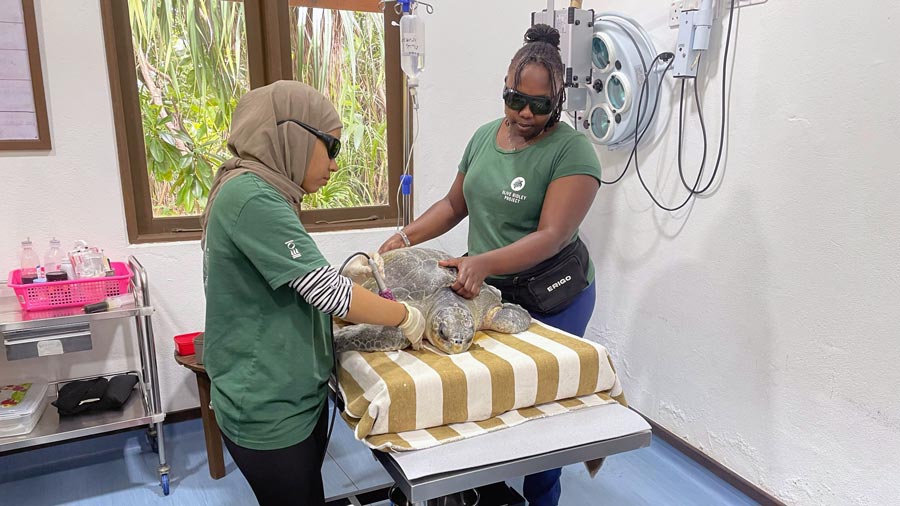
Photobiomodulation, or laser therapy, is the application of various wavelengths of light to our patient in order to accelerate healing and diminish pain. This non-invasive technique is a critical feature of our integrative medicine practice. It is especially useful in patients with soft tissue trauma, bone disease and in post-operative cases.
The patient tanks
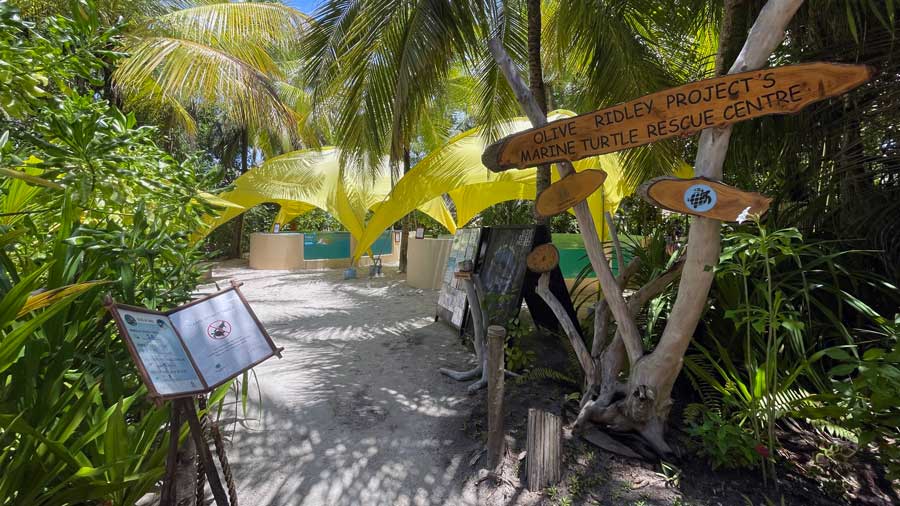
Although the Rescue Centre has 7 tanks of varying sizes, it is designed to accommodate four patients at any given time. We have four ‘hospital tanks’ which are analogous to a hospital bed in a human hospital. These tanks are where our patients spend the majority of their time while under our care.
We also have one large main tank, which is used to apply different types of diving therapy to selected patients that require more space and depth for our clinicians to evaluate them. Two smaller tanks serve as ‘Intensive Care Unit’ tanks. They are used for critical patients or those recovering from surgery and that require constant observation by our veterinary surgeons.
The tanks are supplied by fresh sea water directly from the ocean in a fully automated sand filtration and water-flow regulation system. The system was developed and designed by Coco Collection’s engineer team.
This life support system maintains a continuous flow of fresh sea water to our patients. This optimises water quality and forms is a crucial component of the health and well-being of our patients.
Volunteers & visitors
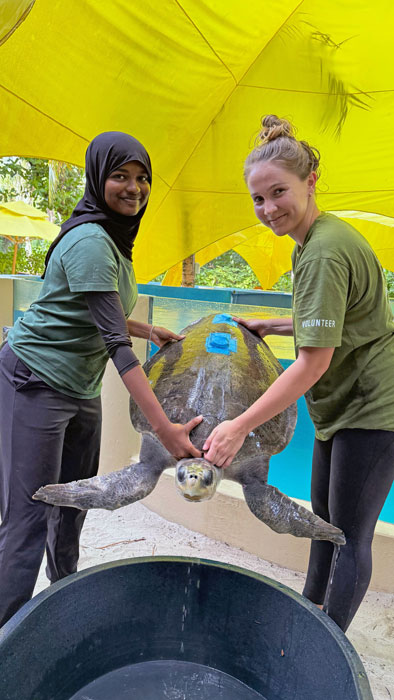
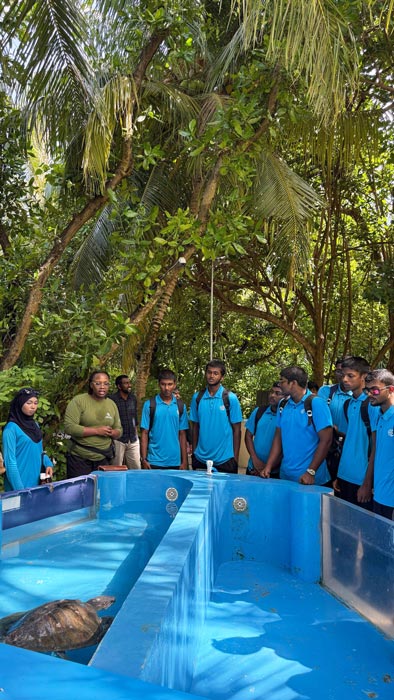
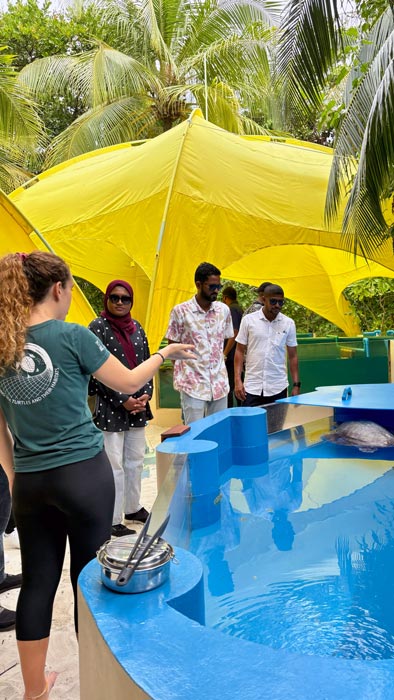
We run a sea turtle volunteer programme at the Marine Turtle Rescue Centre, as well as a veterinary training programme. The volunteer programme is open to anyone above the age of 18. The veterinary training programme is for qualified veterinary surgeons with a special interest in sea turtle medicine.
Guests at Coco Palm Dhuni Kolhu are very welcome to visit the Marine Turtle Rescue Centre between 10am & 4pm every day. Guests can also join us to watch patient feeding every day at around 2pm.
The founding & funding
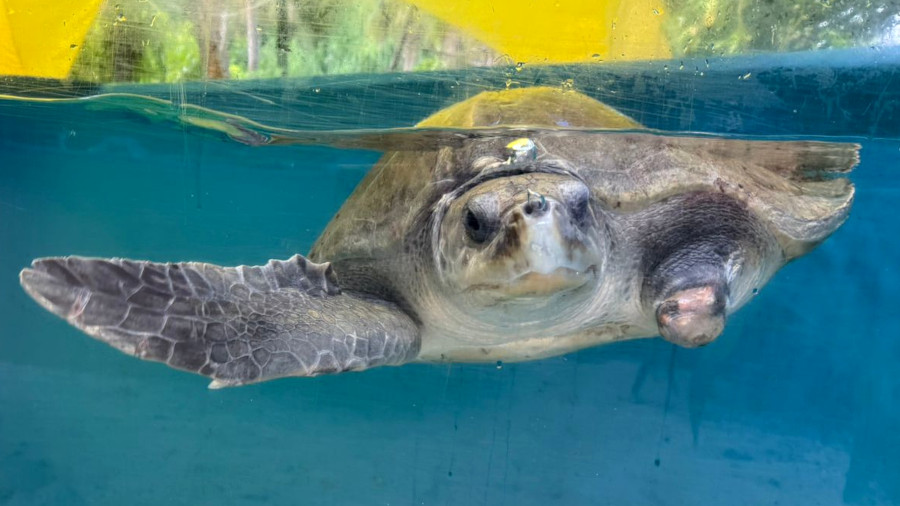
The Marine Turtle Rescue Centre became a reality thanks to the dreams, hard work, and generous support of many individuals and organisations. We are deeply grateful to each and every one.
We especially thank Coco Palm Dhuni Kolhu for hosting and continuously supporting us, the Pacsafe Turtle Fund for their initial grant for medical equipment, and OceanCare for long-term funding of essential medical supplies and veterinary services.
A heartfelt thank you goes to our incredible turtle patient adopters and donors – your support enables us to keep the Rescue Centre running. And to our dedicated volunteers, who help care for our patients every day – we couldn’t do it without you.
Thank you for being part of this journey with us.

